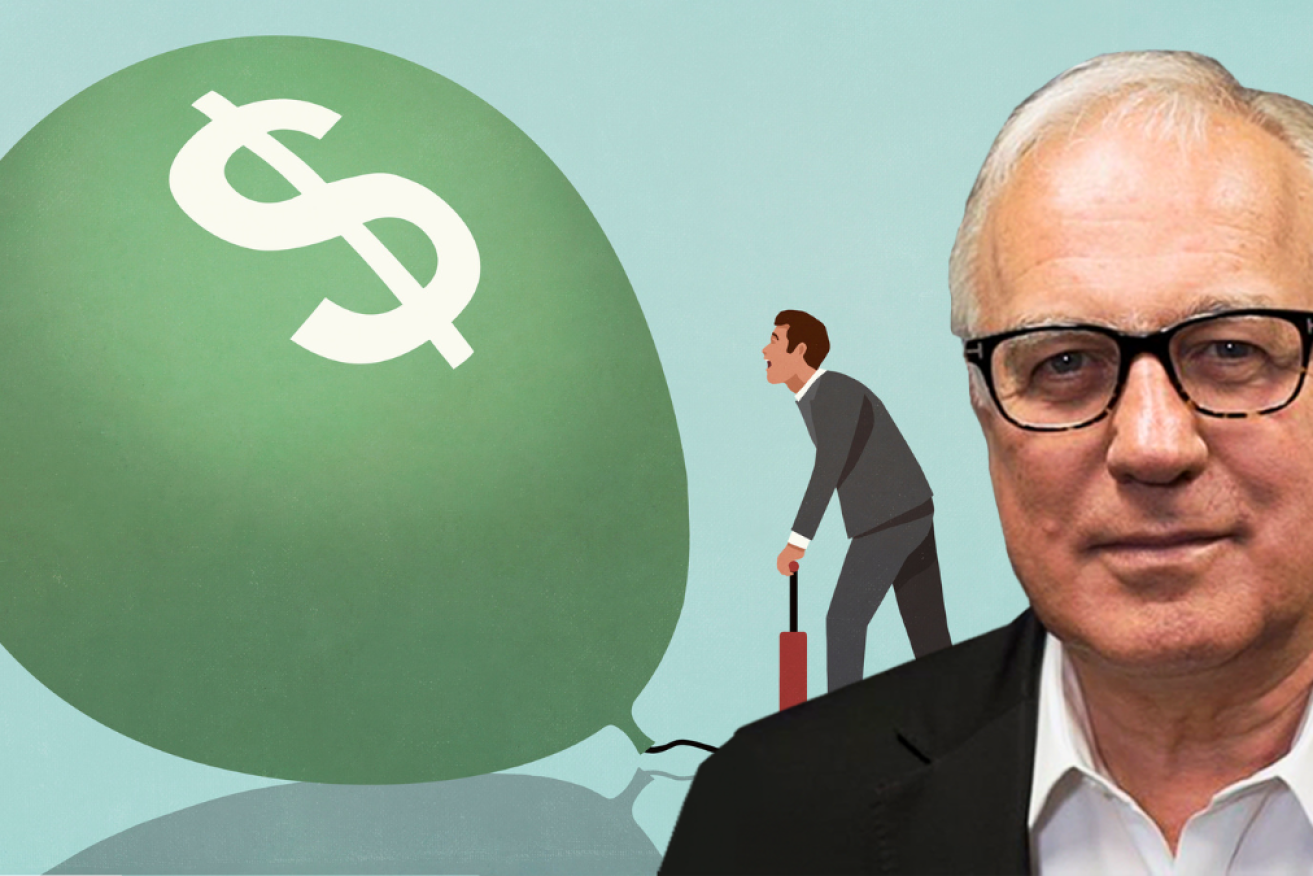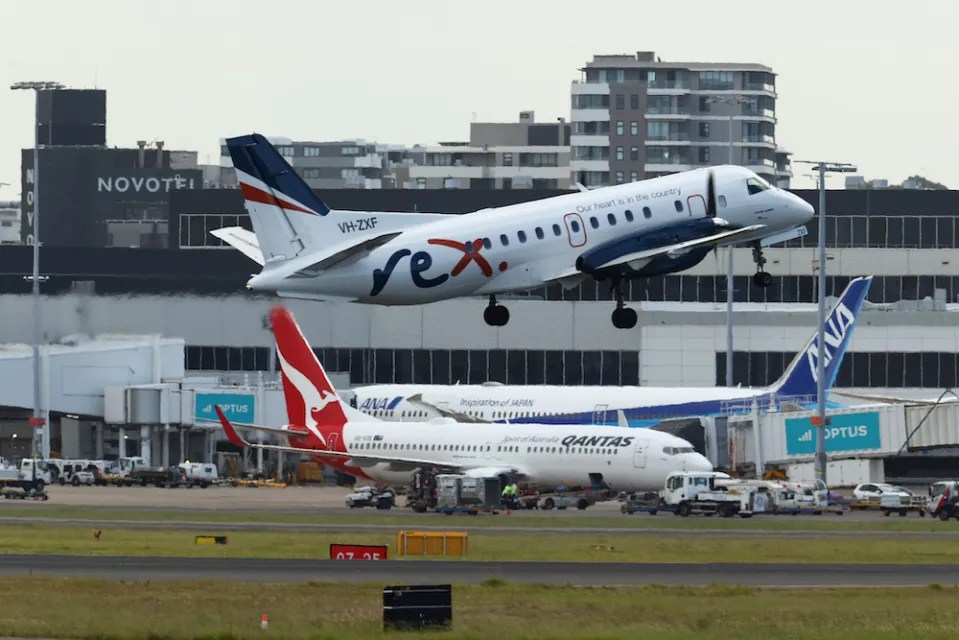Alan Kohler: Name and shame the price gougers. It worked for us once before


Photo: Getty/TND
In June last year I wrote a column for The New Daily headed: “Time to revisit the Allan Fels system of price control – naming and shaming”.
It described how, between 2000 and 2003, the first chairman of the Australian Competition and Consumer Commission used Howard government legislation designed to catch corporate GST cheats to name and shame price gouging in general.
I noted that these days nobody is watching prices except the Reserve Bank, and in June it had just acknowledged for the first time that inflation is partly caused by the behaviour of companies.
The trouble is that the RBA’s method of controlling prices is to make people unemployed or just hard-up so they can’t buy as much, and aggregate demand declines.
So I suggested that it was time revisit the Fels method of price control – naming and shaming.
The ACTU contacted me at the time to say they thought that was a fine idea, and a few weeks later they commissioned the man himself to chair an “ACTU price gouging inquiry”, which concluded last week with a 77-page report, 30 recommendations, and an address to the National Press Club with some old-fashioned Allan Fels naming and shaming.
It’s a good report in five months with limited resources, and Fels’ central recommendation, it seems to me, is 1.4: “The GST pricing legislation of 2000-2003 provisions regarding the naming of businesses and industries that overcharge should be reinstated.”
The other recommendations are mostly about strengthening the ACCC’s resources and powers to ensure greater competition, with one recommendation (and only one) to directly regulate – those of airports, because they are monopolies.
Fels didn’t recommend more direct control of prices because he doesn’t think it would happen and, anyway, he’s a believer in the power of competition, as well as publicity when that doesn’t work.

Providing government assistance to industry competitors would benefit consumers.
Then and now
He’s doubtless right that it wouldn’t happen, and that’s an interesting reflection on how the Australian Labor Party has changed.
The history of direct price controls in Australia is that the ALP has done it, or tried to do it, and the Coalition has undone it.
Essentially, unions and the ALP have always believed that inflation is caused by companies over-charging, while businesses and the Coalition have always believed that inflation is caused by wages rising too much.
So, through history, the fight against inflation has swung from attempts to stop companies from over-charging to the suppression of wages both directly and through monetary policy.
The wartime National Security Act in 1939 gave the Curtin Labor government the power to control prices, and then after the war, the states agreed to a three-year extension of federal price control.
In 1948 Ben Chifley was worried about post-war inflation and tried to keep Commonwealth power over prices and rents, arguing “any intelligent Australian would realise that price control must be operated on a Commonwealth basis if there was to be uniformity”. But each state had a prices minister and was unwilling to give it up. So a referendum was held.
Chifley thought he’d win it because in a 1947 Gallup poll, 55 per cent of Australians said they were in favour of centralised price control.
However, by the time the referendum was held in May 1948, Menzies was campaigning against bank nationalisation and communism and price control got mixed up with that. The referendum lost in all states, with 60 per cent against (the same as the last year’s Voice referendum, as it happens).
State price controls continued into the 1950s but Coalition governments gradually dismantled them and by 1960 only South Australia, Queensland and New South Wales still had some, and only on a few things.
In 1965, Bob Menzies’ attorney-general, Garfield Barwick, brought in the first Trade Practices Act, which included some ability to control prices, but was limited to instances of “monopolisation”. And since it used the corporations power in the Constitution, it didn’t apply to unincorporated firms.
Another shot, same result
In 1973 Gough Whitlam tried another referendum to control prices, and when that lost again (56 per cent against this time) he set up the Prices Justification Tribunal (PJT), joining a number of countries trying to bring inflation down by directly controlling prices.
The PJT law required firms with turnover of more than $20 million (about $140 million in today’s money) to pre-notify of intended price increases, and wait to be told by the PJT whether they could go ahead. It meant delay was the tribunal’s weapon, but while it drove companies mad, it didn’t do much about prices.
The PJT was abolished in July 1983 by the Hawke government when it introduced the Prices Surveillance Authority (PSA) as part of the first Prices and Incomes Accord with the ACTU.
The accord capped wages, and price control was a bone thrown to the unions. The PSA was pretty soft until, in 1989, Allan Fels was put in charge. In 1995 Paul Keating made him the first chairman of the Australian Competition and Consumer Commission, and in 1999, as part of John Howard’s GST legislation, the ACCC was asked to expose any price exploitation under the cover of the tax changes.
Those laws lapsed in 2003, and in the meantime Howard had repealed Hawke’s Prices Surveillance Act of 1989.
And so, since 2003, ardent advocates of free markets Friedrich von Hayek and Milton Friedman have prevailed, and the efficient market hypothesis and pre-eminence of price discovery have become the maypoles around which economics has danced.
Governments – including Labor governments – have given up any attempt at intervening to control prices beyond regulating competition (too weakly, says Allan Fels) and monetary policy has become the only macroeconomic tool.
A litany of ‘why nots’
In my view the government can and should get more involved, but not by trying directly to control prices. Instead it should promote competition in two ways: Legislate the ability to break companies up, actively help new competitors trying to break into an oligopoly with discounting, and create a price comparison website.
The government often provides grants or other assistance to businesses it regards as operating in the national interest, so why not Aldi and IGA supermarkets, or Bonza or Rex airlines?
And, yes, a national government-run price comparison website would be a massive undertaking, maybe a nightmare if the government is doing it, but with artificial intelligence now available, is it out of the question?
The prices of everything are online now. I’m sure ChatGPT or Google’s Gemini, or one of the other friendly AI bots, would be happy to collect and display them all. For a fee, of course.
Alan Kohler writes twice a week for The New Daily. He is finance presenter on the ABC News and also writes for Intelligent Investor.








